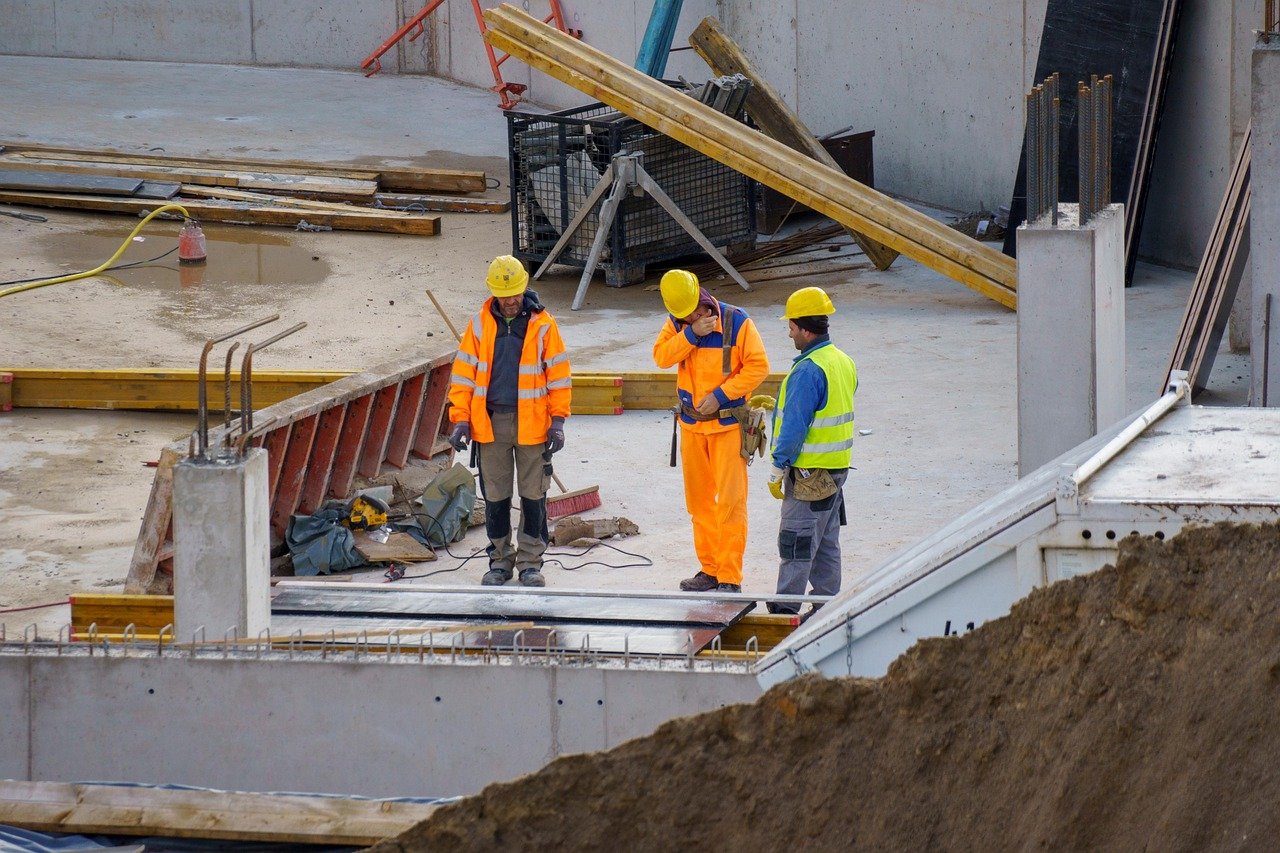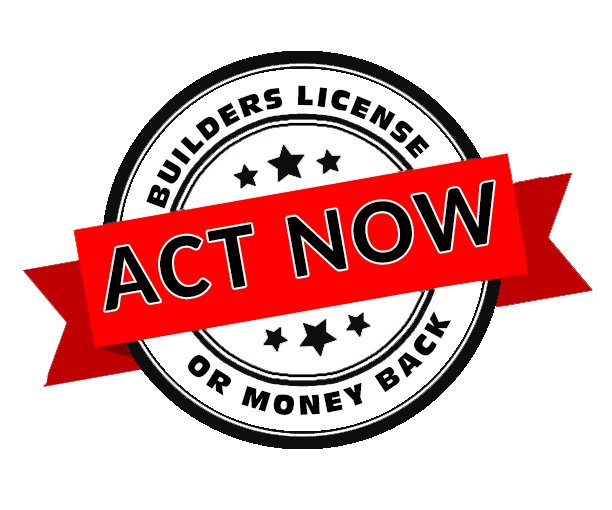
CPC50220 - DIPLOMA OF BUILDING AND CONSTRUCTION (BUILDING)
- Residential construction limited to National Construction Code Class 1 and 10 buildings to a maximum of 3 storeys.
- Commercial construction limited to National Construction Code Class 2 to 9 buildings, Type C and B construction.
Occupational titles may include:
- • Builder
- • General Foreperson
- • Building Inspector
The construction industry strongly affirms that training and assessment leading to recognition of skills must be undertaken in a real or very closely simulated workplace environment. To achieve this qualification, the candidate must have access to a live building and construction workplace to meet the requirements detailed in the Assessment Requirements of core unit CPCCBC4008 Supervise communication and administration processes for building and construction projects. Completion of the general construction induction training program specified by the model Code of Practice for Construction Work is required for any person who is to carry out construction work. Achievement of unit CPCWHS1001 Prepare to work safely in the construction industry meets this requirement.
Main Skills Recognised via RPL:
- • Apply building codes & standards (Classes 1–10, 2–9 Type C, Type B)
- • Read & interpret plans and specifications
- • Prepare simple building sketches and drawings
- • Apply structural principles for residential/commercial and low-rise up to 3 storeys
- • Conduct site surveys and set-out procedures
- • Select, prepare & administer construction contracts
- • Estimate costs & produce labour/material schedules
- • Monitor costing systems on complex projects
- • Supervise planning and on-site construction work
- • Select & manage contractors
- • Supervise site communications and administration
- • Apply legal requirements and administer contractor obligations
- • Manage construction work quality, risk, and WHS
- • Manage building/construction business finances
- • Manage environmental practices and technical/legal reporting
Entry Requirements
Core Units
BSBOPS504 Manage business risk
BSBWHS513 Lead WHS risk management
CPCCBC4001 Apply building codes and standards to the construction process for Class 1 and 10 buildings
CPCCBC4003 Select, prepare and administer a construction contract
CPCCBC4004 Identify and produce estimated costs for building and construction projects
CPCCBC4005 Produce labour and material schedules for ordering
CPCCBC4008 Supervise site communication and administration processes for building and construction projects
CPCCBC4009 Apply legal requirements to building and construction projects
CPCCBC4010* Apply structural principles to residential and commercial constructions
CPCCBC4012 Read and interpret plans and specifications
CPCCBC4013 Prepare and evaluate tender documentation
CPCCBC4014 Prepare simple building sketches and drawings
CPCCBC4018 Apply site surveys and set-out procedures to building and construction projects
CPCCBC4053 Apply building codes and standards to the construction process for Class 2 to 9, Type C buildings
CPCCBC5001 Apply building codes and standards to the construction process for Type B construction
CPCCBC5002 Monitor costing systems on complex building and construction projects
CPCCBC5003 Supervise the planning of onsite building and construction work
CPCCBC5005 Select and manage building and construction contractors
CPCCBC5007 Administer the legal obligations of a building and construction contractor
CPCCBC5010 Manage construction work
CPCCBC5011 Manage environmental management practices and processes in building and construction
CPCCBC5013 Manage professional technical and legal reports on building and construction projects
CPCCBC5018* Apply structural principles to the construction of buildings up to 3 storeys
CPCCBC5019 Manage building and construction business finances
Electives:
CPCCBC5004 Supervise and apply quality standards to the selection of building and construction materials
CPCCBC5006 Apply site surveys and set-out procedures to building projects up to three storeys
CPCCBC5009 Identify services layout and connection methods for Type B and C constructions
At Next Era Training, our Recognition of Prior Learning (RPL) process is designed to be simple, compliant, and efficient. It aligns with the Standards for RTOs 2015 and meets all ASQA regulatory requirements, ensuring that the evidence you provide satisfies the principles of assessment and rules of evidence.
We provide easy-to-follow templates, a detailed instruction guide, and a Dropbox upload link so you can submit everything in one secure place—no printing, scanning, or mailing required.
What You Need to Provide
The evidence you submit must demonstrate that your trade experience meets the competency standards for the qualification. We make this easy for you with pre-filled electronic fillable forms and clear instructions.
1. Photographic Evidence
- • Provide one photo per unit of competency
- • Images must show your trade work, such as completed jobs, worksites, tools, materials, or in-progress stages
- • You do not need to appear in the photos—focus is on the job/task itself
- • Photos must match to the correct unit.
- 2. Referee/Testimonial Form (Provided)
- • Completed by a qualified supervisor, licensed builder, employer, or experienced colleague
- • Confirms your practical skills and responsibilities
- • We supply a simple form covering all units.
- 3. Combined Employment, Project & CV Form (Provided)
- One document that captures:
• Your employment history
• Your project/jobsite background
• A Self Assessment Questionnaire
- 4. Instructional Guide (Provided)
- Includes:
• Step-by-step instructions on completing each form
• Examples of quality evidence
• Clear tips for matching evidence to specific units
- 5. Easy Upload via Dropbox
- • You will be given your dedicated Dropbox folder link to upload all your evidence files
- • Simply drag and drop your completed forms and photo evidence—done
- • No printing, scanning or emailing required.
Regulatory Compliance
Your evidence will be assessed according to ASQA requirements and must meet these criteria:
- • Validity – Clearly relates to the unit of competency
- • Authenticity – Proven to be your own work
- • Currency – Demonstrates recent and relevant experience
- • Sufficiency – Enough detail to assess your competency
Our system is designed to make this process as straightforward as possible—with full support from experienced assessors.
Questions?
We’re here to help if you need any assistance. With clear instructions, templates, and real support, you’re never left guessing.
Next Era Training — RPL made easy, compliant, and built around you.
The total cost for the Recognition of Prior Learning (RPL) assessment is $2,950.00.
This is a fixed, all-inclusive fee—there are no hidden charges, no upselling, and no unnecessary extras.
We believe in transparent pricing and a straightforward process, so you know exactly what you’re paying for from the start.
PAYMENT PLANS
At Next Era Training Pty Ltd, we offer a clear and simple payment process for Recognition of Prior Learning (RPL) qualifications. Our model ensures transparency, flexibility, and peace of mind throughout your assessment journey.
| Stage | Payment | Details |
|---|---|---|
| Step 1: Application Submission | $500.00 Deposit | Payable after submitting your application form. This secures your place and initiates the assessment process. |
| Step 2: RPL Assessment | No payment required | Our qualified assessors will review your evidence and complete the RPL assessment. |
| Step 3: Assessment Approval | $2,450.00 Balance | Payable once your RPL assessment is successfully approved. This must be paid prior to issuing your certificate. |
| Step 4: Certification | Certificate Issued | Upon full payment, a digital certificate will be emailed to you and a hard copy will be mailed to your nominated address. |


